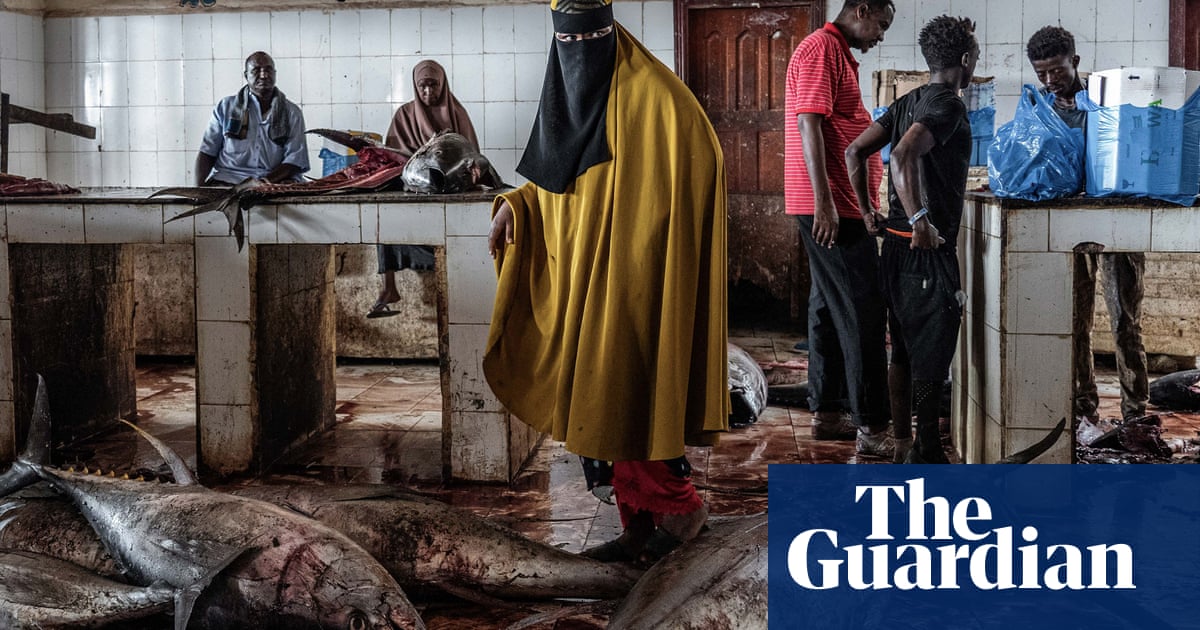
Ever since I was a teenager, I have been fascinated by Indigenous peoples. Growing up in Murmansk I was aware of the Sami, who are traditionally reindeer herders from the Kola peninsula in northern Russia, but there are also Sami in Finland, Norway and Sweden. In Russia, I was fascinated first by the Sami religious places such as Lake Seydozero, which is sacred to them; then I became interested in their history and how the Soviet era had restricted and changed Sami culture.
Communism effectively destroyed their whole nomadic existence and their reindeer herds were organised into collective farms called kolkhozes. They were given quotas for fishing in the tundra and were forced into a sedentary existence, housed in freezing cold apartment blocks with no heating. They were banned from speaking their language, wearing their traditional clothes or celebrating their culture – so it almost completely disappeared. Nonetheless, little by little some of the Russian Sami began to appreciate certain “comforts”, such as helicopters to get to isolated places, boarding schools where they could leave their children when they worked, and bonuses for raising herds of reindeer.
Today, they are quite a damaged group of people that the authorities have completely forgotten. There are about 1,500 Sami living in villages in northern Russia, but very few are able to speak the language – about 200. Now they are trying to revive it and their culture.
This picture was taken in March when there is still a lot of snow and the Sami have a two-day festival called the Festival of the North. They take part in traditional winter sports, skiing and sledding, and have reindeer sleigh races. The people who race are professional reindeer herders who have passed on their secrets from generation to generation. If you don’t train reindeer expertly they go off in all directions.
When the Sami were nomadic the reindeer were essential to their lives, not just for food but for clothes and tools, and things like belts, shoes and even buttons. The reindeer is a sacred animal for these people and only selected ones, bred for the purpose, are killed – they don’t kill those bred for racing or pulling sleds. Before they kill the reindeer there is a ritual in which they ask the animal for forgiveness.
This picture is part of a reportage called Kildin, a Language for Russian Samis Survivors that won the Marilyn Stafford FotoReportage award, and explores how the Sami in Russia are adapting to modernity while preserving their culture and traditions on their own terms.
It shows a young man, Andrei, taking wood to the hangar they use to smoke fish during the festival. He didn’t speak Sami, which was not taught at schools in Russia, but he is now taking lessons. The fuselage was from a damaged aeroplane brought to the village by his father, who had worked for Aeroflot in the 1990s after the collapse of the USSR.
The war in Ukraine has been hard economically for the Russian Sami and it has divided opinion. Some are against the war but because some are for it, the financial help they were getting from Sami groups in neighbouring countries has stopped.
I bought my first camera when I was 19. The editor of the local paper, the Murmansk Messenger, noticed me and asked to see my photos. He liked them and sent me out as a special correspondent to photograph the Sami.
It was always my dream to do this kind of reportage on the Sami. It is a labour of love, because I am passionate about the subject. I am interested in all native and nomadic peoples and I am working on several projects. I live a kind of nomadic life myself.
Natalya Saprunova’s CV
Born: Murmansk, Russia, 1986.
Trained: Graduated as a French teacher in Russia, studied marketing and communication in France then documentary photojournalism at the EMI-CFD school.
Influences: “Pieter Ten Hoopen, Jane Evelyn Atwood, also French humanist photographers such as Robert Doisneau and Henri Cartier-Bresson.”
High point: “Taking up photography again after an eight-year break during studies in France.”
Low point: “When my lens jumped from my pocket into the river in the middle of the tundra.”
Top tip: “Grasp the providence of circumstances. If something doesn’t work, let go and build yourself up again.”












